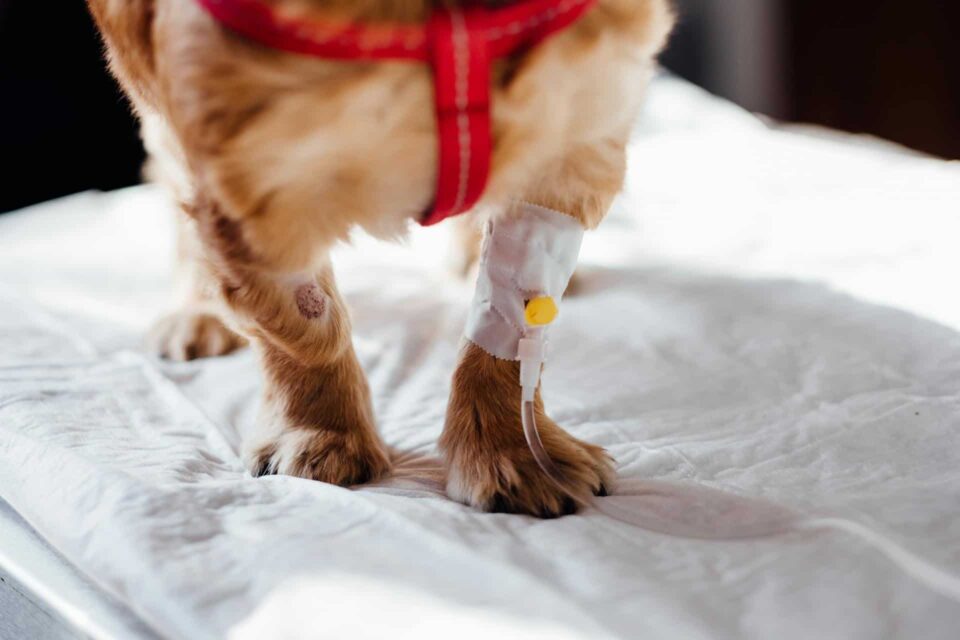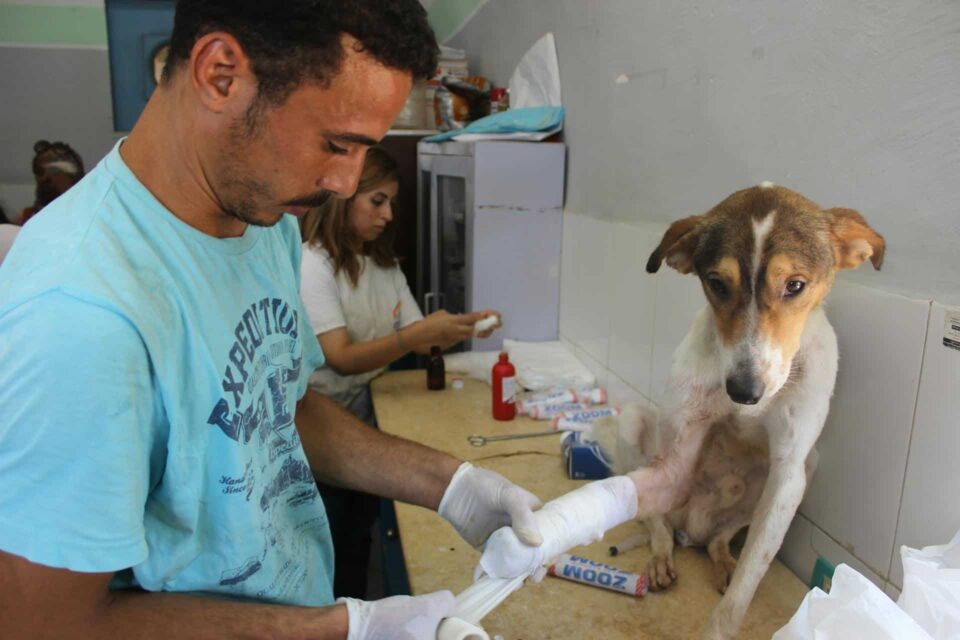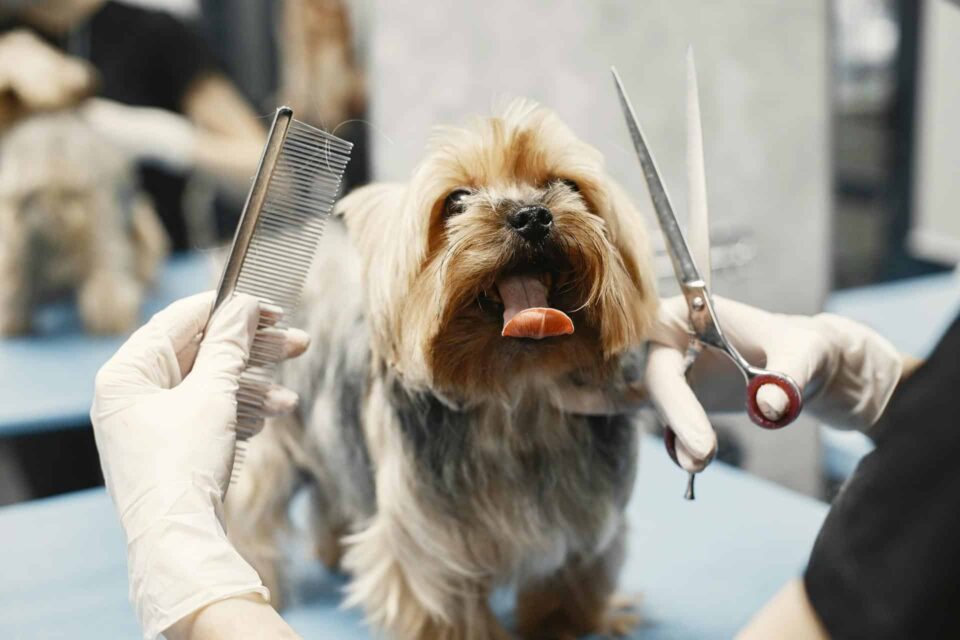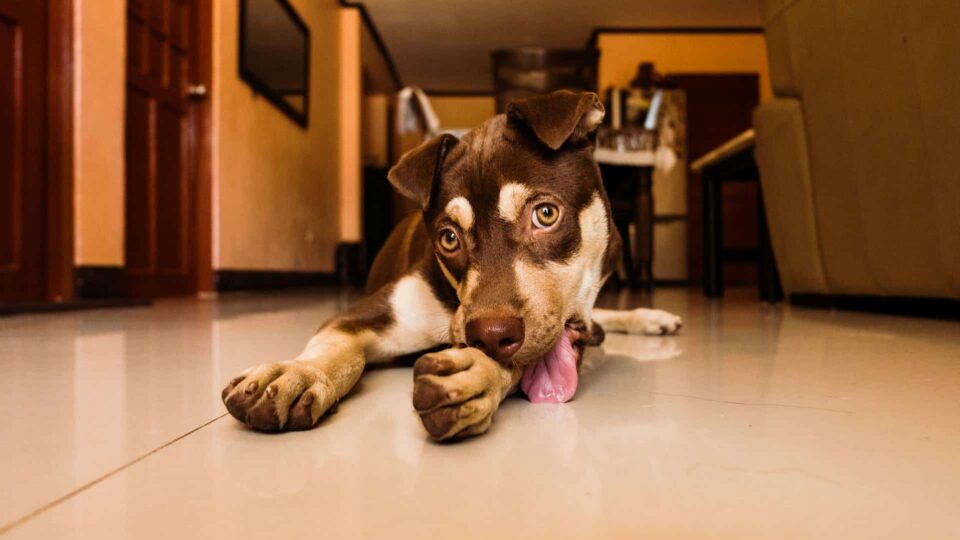Why Does My Dog Have Bald Spots?
Discovering bald spots on your dog can be alarming and may signal underlying health issues. It’s essential to understand the various causes, ranging from allergies to hormonal imbalances, and to know the appropriate steps to take for diagnosis and treatment. This article delves into the common reasons for canine alopecia and provides guidance on how to address this condition effectively.
Key Takeaways
- Bald spots in dogs can be caused by allergies, parasites, infections, trauma, or hormonal imbalances, each requiring specific veterinary diagnostic tests and treatments.
- Consulting a veterinarian is crucial for determining the cause of bald spots through diagnostic tests such as skin scrapes, blood tests, and biopsies, followed by an appropriate treatment plan.
- Preventative measures, including regular check-ups, dietary management, and environmental adjustments, can help reduce the risk of bald spots and ensure your dog’s coat remains healthy.
Understanding the Causes of Bald Spots in Dogs
Allergies as a Trigger for Hair Loss
If you’ve noticed your furry friend scratching more than usual or developing bald patches, allergies could be the culprit. Both food and environmental allergies are not uncommon in dogs, leading to discomfort and hair loss. Your dog might be reacting to a variety of allergens, from pollen and dust to certain ingredients in their food.
When dealing with allergies, the symptoms can be quite distressing for your pet. Look out for signs such as chronic itchiness, redness, and the formation of hotspots. These symptoms can cause your dog to scratch incessantly, resulting in hair loss and potential secondary infections.
To tackle these issues effectively, consider the following steps:
- Identify potential allergens and eliminate them from your dog’s environment or diet.
- Maintain a clean and well-groomed coat to minimize irritation.
- Consult with a veterinary dermatologist for specialized care and treatment options.
Remember, addressing allergies in your dog is a process that requires patience and attention to detail. With the right approach, you can help alleviate their symptoms and promote a healthier coat.
Related: Dog Shampoo Do’s and Don’ts: What to Watch Out For
The Impact of Parasites on Canine Skin
When your beloved dog starts to develop bald spots, it’s essential to consider the role of external parasites. Fleas, ticks, and mites are common culprits that can cause significant discomfort and lead to hair loss. These parasites irritate the skin, prompting your dog to scratch intensely, which can result in bald patches.
Particularly, mites such as Sarcoptes scabiei can burrow into your dog’s skin, causing sarcoptic mange. This condition not only leads to flaking and dandruff but also to severe itching. If left untreated, the constant scratching can create noticeable bald spots. Here are some steps to tackle these pesky invaders:
- Consult your veterinarian for an accurate diagnosis.
- Follow the prescribed treatment plan, which may include medicated shampoos or topical applications.
- Maintain regular grooming and flea prevention routines to keep parasites at bay.
Remember, some skin conditions like sarcoptic mange are zoonotic, meaning they can be transmitted to humans. If you suspect your dog has mange or any other parasitic infection, it’s crucial to seek veterinary care promptly to protect both your pet and your family.
Related: 4 Skin Conditions Every Dog Owner Should Know About
Infections Leading to Canine Alopecia
When you notice bald spots on your dog, it’s important to consider the possibility of infections as a culprit. Bacterial or fungal infections, such as ringworm, are common causes of hair loss in dogs. These infections can make your dog’s skin itchy and uncomfortable, prompting them to scratch and further damage the area. Ringworm, in particular, may not always be itchy, but it weakens the hair, causing it to break and result in bald patches.
To address these issues, your vet will need to examine your pet and may perform various diagnostic tests. These can include skin scrapes, hair plucks, and even blood tests to pinpoint the exact nature of the infection. Once identified, your vet will prescribe the right medications to treat the infection and promote hair regrowth.
Remember, regular grooming and monitoring for skin disorders are essential for a dog’s health. Factors like allergies, nutrition, and stress influence shedding rates and coat health. Veterinary advice is crucial for persistent issues.

The Role of Trauma and Injury in Hair Loss
If your dog begins to develop sudden bald spots, it’s understandable to be concerned. A frequent culprit is skin trauma or injury, which can occur through different avenues like physical wounds, excessive licking or scratching, and even compulsive grooming. Such behaviors can result in localized hair loss, leading to conspicuous bald patches on your cherished companion.
Stress and anxiety can also play a significant role in your dog’s skin health. Behavioral issues stemming from emotional upset can disrupt the normal hair growth cycle, leading to bald spots. In some cases, your vet may refer you to a behavioral specialist to address the underlying issues.
- Burns, whether from heat, cold, or chemicals, can damage your dog’s skin and result in hair loss.
- Obsessive behaviors, like over-grooming, can cause bald spots due to repeated trauma to the same area.
It’s crucial to identify the cause of the trauma and address it promptly to prevent further hair loss and promote healing.
Related: Why Is Your Dog Shedding So Much?
Hormonal Imbalances and Endocrine Disease Effects
When pondering why-does-my-dog-have-bald-spots, it’s crucial to consider hormonal imbalances and endocrine diseases. Hypothyroidism and Cushing’s disease are common culprits that disrupt your dog’s hormonal equilibrium, leading to hair loss or thinning. These conditions often result in symmetrical hair loss on both sides of your dog’s body.
Autoimmune diseases can also play a role in canine alopecia. The immune system, confused, may attack the hair follicles, mistaking them for invaders. This autoimmune response can lead to significant hair loss.
To address these issues, it’s important to:
- Observe your dog for any signs of excessive licking or scratching.
- Monitor for any changes in your dog’s coat or weight.
- Consult your veterinarian for a proper diagnosis and treatment plan.

Addressing Canine Bald Spots: Steps to Take
Consulting Your Vet: Diagnostic Tests and Treatments
When you notice bald spots on your dog, the first step is to consult your veterinarian for a professional diagnosis. Your vet can perform a variety of diagnostic tests to pinpoint the exact cause of your dog’s hair loss. These may include parasite checks, hair plucks, skin scrapes, blood tests, and even skin biopsies. Each test targets a specific potential cause, from parasites to hormonal imbalances, ensuring a comprehensive approach to your dog’s condition.
After the tests, your vet will discuss the results with you and recommend an appropriate treatment plan. This could range from medications to address infections or parasites, to dietary changes if allergies are suspected. It’s crucial to follow your vet’s advice closely and avoid self-diagnosing or treating your dog without guidance, as this could exacerbate the issue.
Remember, timely and accurate diagnosis is key to effectively treating bald spots and preventing further distress to your dog. Here are some steps you might expect during the consultation:
- Detailed discussion of your dog’s symptoms and health history
- Physical examination and assessment of the bald spots
- Diagnostic tests as deemed necessary by the vet
- Discussion of potential treatments based on the diagnosis
Medications and Lifestyle Changes for Recovery
Once your vet has identified the underlying cause of your dog’s bald spots, they may prescribe medications to help your furry friend recover. These could include anti-inflammatory drugs like corticosteroids to reduce swelling, or antihistamines to alleviate itching. It’s important to follow the prescribed dosage and schedule to ensure the best results.
In addition to medications, certain lifestyle changes can significantly aid in your dog’s recovery. For instance, routine bathing with a medicated shampoo may help if your dog has skin infections or is prone to allergies. Adjusting your dog’s diet can also play a crucial role, especially if food allergies are suspected. An elimination diet, where certain foods are removed and then gradually reintroduced, can help pinpoint the exact cause of the allergic reaction.
- Always consult with your vet before making any changes to your dog’s medications or diet.
- Monitor your dog’s response to the treatment and report any concerns to your vet.
- Maintain a consistent routine to help your dog feel secure and to monitor their progress.

Preventative Measures: Reducing the Risk of Bald Spots
To safeguard your furry friend from unwanted bald spots, it’s essential to embrace a proactive approach to their health and well-being. Regular grooming is not just about keeping your dog looking their best; it’s a vital practice that allows you to spot any unusual changes in their skin or coat early on. By maintaining a consistent grooming routine, you can catch potential issues like dandruff or parasites before they escalate into more significant problems.
A balanced diet enriched with essential nutrients supports healthy skin and fur. Ensure your dog’s meals are packed with omega fatty acids, vitamins, and minerals that promote coat health. Additionally, keeping your dog’s living environment clean and free from irritants can prevent allergic reactions that often lead to hair loss.
Lastly, routine veterinary check-ups are crucial. Your vet can offer personalized advice and may recommend preventive treatments such as flea and tick control products. By staying vigilant and addressing the first signs of skin issues, you can greatly reduce the risk of your dog developing bald spots.
If your furry friend is suffering from unsightly bald spots, it’s time to take action with Gou Gou Pets™ holistic pet care. Our products, rooted in ancient Chinese philosophies, are designed to promote a healthy coat and skin for your dog. Don’t let bald spots dampen your pet’s spirit – visit our website to explore our range of Skin Care products and take the first step towards a lustrous, full coat. Plus, enjoy free shipping on orders over $49 and sign up for our email to receive 10% off your first purchase. Your pet deserves the best – choose Gou Gou Pets™ for holistic health and happiness.
Understanding and Addressing Bald Spots
Bald spots on dogs can be attributed to a variety of causes, ranging from allergies and parasites to infections, trauma, hormonal imbalances, and more. It’s essential for dog owners to observe their pets closely and seek veterinary advice when changes in the coat or skin are noticed. Diagnostic tests may be necessary to identify the underlying issue, and treatment plans will vary accordingly. While some causes of alopecia can be prevented with proper care, others require medical intervention. Remember, early detection and treatment are key to ensuring the health and comfort of your furry friend.
Related: 4 Tips to Keep Your Dog’s Coat Clean
~Veterinarian Recommended
